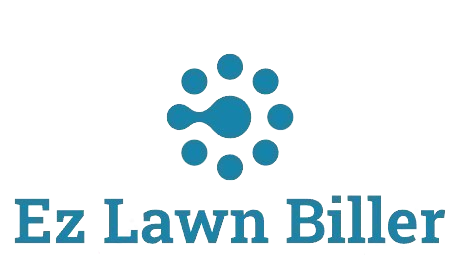Best Practices for Lawn Care Pros: Managing Schedules Effectively
Managing schedules effectively is crucial for lawn care professionals seeking to enhance productivity and client satisfaction. This article delves into best practices that will not only streamline your operations but also help you maintain consistent communication with your clients. From leveraging technology to optimizing your routes, these strategies will empower you to manage your time better and grow your lawn care business.
In the world of lawn care, efficient scheduling can be the difference between success and stagnation. The ability to juggle multiple clients, varying service requirements, and unpredictable weather conditions can be daunting. However, by implementing proven scheduling practices, lawn care pros can ensure that they meet their clients’ needs while maximizing operational efficiency.
This article will cover key areas such as utilizing lawn service software, optimizing routes for efficiency, setting realistic timelines, and maintaining effective communication with clients. We’ll explore how each of these elements contributes to a well-managed schedule in the lawn care industry.
Embrace Technology with Lawn Service Software
One of the most effective ways to manage your schedule as a lawn care professional is by utilizing dedicated lawn service software. These programs are designed specifically for the lawn care industry, enabling you to automate many of the tedious tasks that can consume your time.
For instance, software like EZ Lawn Biller offers automated billing and client management features that streamline the invoicing process. This reduces the risk of human error and allows you to focus on providing quality services to your clients. Additionally, scheduling tools enable you to easily organize appointments and track your team’s availability.
Incorporating lawn billing software into your daily operations not only saves time but also enhances professionalism. With customizable invoices and service history tracking, you can ensure that each client receives the attention they deserve. Moreover, the use of a lawn service app can provide real-time updates on schedules and service deliveries, making it easier for you and your clients to stay informed.
Optimize Your Routes for Efficiency
When managing multiple clients, route optimization becomes essential. Efficient routing not only saves time but also reduces fuel costs, therefore maximizing your profit margins. To achieve this, consider using mapping software that can help you visualize and plan the most efficient routes for your daily work.
By grouping clients that are located close to each other, you can minimize travel time and increase the number of jobs completed in a day. This approach not only enhances productivity but also allows you to maintain a consistent schedule, which is vital for building trust with clients.
Additionally, take into account seasonal variations in client needs. For example, some clients may require weekly mowing services during the summer, while others may only need monthly fertilization in the spring. By understanding the seasonal patterns of your clientele, you can adjust your routes and schedules accordingly, ensuring that no client feels neglected.
Set Realistic Timelines
Another critical aspect of effective scheduling is setting realistic timelines for service delivery. It’s important to assess the time each service will take and factor in potential delays such as weather conditions or equipment issues. Overpromising can lead to dissatisfaction among clients and create a backlog of work.
Moreover, consider implementing a buffer time between appointments. This allows for unexpected delays and gives you the flexibility to accommodate emergency requests from clients. Remember, a well-planned schedule is not just about filling as many slots as possible; it’s about ensuring each client receives the quality service they expect.
By managing client expectations through transparent communication about timelines, you can build rapport and trust. Always keep your clients informed about any changes or delays in service to maintain their confidence in your reliability.
Maintain Effective Communication with Clients
Effective communication is the cornerstone of successful scheduling. Clients appreciate being kept in the loop regarding their services. Utilize multiple communication channels such as email, text messaging, and phone calls to keep clients updated about their appointments.
Using automated messages through your lawn service app can also enhance communication. Remind clients of upcoming appointments, notify them of any changes, and follow up after services to ensure their satisfaction. This proactive approach not only demonstrates professionalism but also encourages repeat business.
Additionally, consider gathering feedback from clients about their preferences. Understanding your clients’ needs and expectations can help you tailor your services and scheduling to better suit their requirements, leading to improved client retention and word-of-mouth referrals.
Implement a Consistent Scheduling Routine
Creating a consistent scheduling routine will enhance your operational efficiency. For instance, designate specific days for certain services, such as dedicated mowing days or days for aeration treatments. This consistency not only helps streamline operations but also allows clients to anticipate when they can expect services.
Moreover, using a centralized calendar that everyone on your team can access reduces scheduling conflicts and improves communication among team members. This tool also helps in tracking ongoing projects and understanding workload distribution, ensuring that no one is overwhelmed.
By maintaining a consistent schedule, you build a predictable environment for both your team and your clients, contributing to a smoother workflow and increased satisfaction.
Utilize Analytics for Continuous Improvement
To refine your scheduling practices continually, consider leveraging analytics provided by your lawn service software. Analyzing data such as service frequency, time spent on each job, and client feedback can provide insights into areas for improvement.
For example, if data shows that certain services consistently exceed the estimated time, you may need to revise your timelines or provide additional training for your staff. Similarly, understanding which services are most in-demand can help you allocate resources more effectively.
By employing an iterative approach to your scheduling strategy, you can make informed decisions that enhance efficiency and client satisfaction. Regularly reviewing your processes ensures that you stay responsive to both market changes and client needs.
Train Your Team on Scheduling Best Practices
It’s essential that everyone on your team understands and implements the scheduling best practices established within your business. Conduct regular training sessions focused on effective time management, route optimization, and customer service skills.
Encourage team members to provide input on scheduling processes, as they may have valuable insights from their experiences on the field. Foster an environment where team collaboration leads to better scheduling solutions, which can improve overall service delivery.
By investing in your team’s training, you empower them to take ownership of their schedules, leading to a more efficient and cohesive workflow. A well-informed team is crucial for maintaining the quality of service that clients expect.
Adapt to Seasonal Changes
As a lawn care professional, it’s vital to adapt your scheduling practices to accommodate seasonal changes in service demand. During peak seasons, such as spring and summer, you may experience a surge in client requests for services like mowing and fertilization.
In contrast, during the fall and winter months, tasks may shift towards leaf removal or snow clearing. Understanding these seasonal dynamics allows you to adjust your schedules proactively, ensuring that you meet client needs throughout the year.
By developing a flexible scheduling strategy that takes seasonal variations into account, you can maintain a steady workflow and keep clients engaged with your services year-round.
Leveraging Client Management Features
Utilizing the client management features of your lawn service software is another effective way to enhance your scheduling practices. By keeping track of each client’s service history, preferences, and feedback, you can tailor your approach to individual needs.
For example, if a client prefers early morning services due to their work schedule, you can prioritize their appointments accordingly. This level of personalization builds client loyalty and strengthens your business relationships.
Additionally, using a lawn company app allows clients to manage their own appointments. This empowerment can lead to higher levels of satisfaction, as clients can easily book or reschedule services as needed, reducing the burden on your team.
Conclusion
In conclusion, managing schedules effectively as a lawn care professional is a multifaceted endeavor that requires a combination of technology, communication, and strategic planning. By embracing lawn service software, optimizing routes, setting realistic timelines, and maintaining effective client communication, you can build a robust scheduling system that enhances your business operations.
Implementing these best practices not only boosts your efficiency but also improves client satisfaction, which is crucial for business growth. As you integrate these strategies into your daily routine, remember that adaptability and continuous improvement are key to staying ahead in the competitive lawn care industry.
Are you ready to streamline your scheduling and billing process? Explore the powerful features of lawn billing software like EZ Lawn Biller to enhance your lawn care business today. Don’t miss the opportunity to elevate your operations and ensure long-term success.




